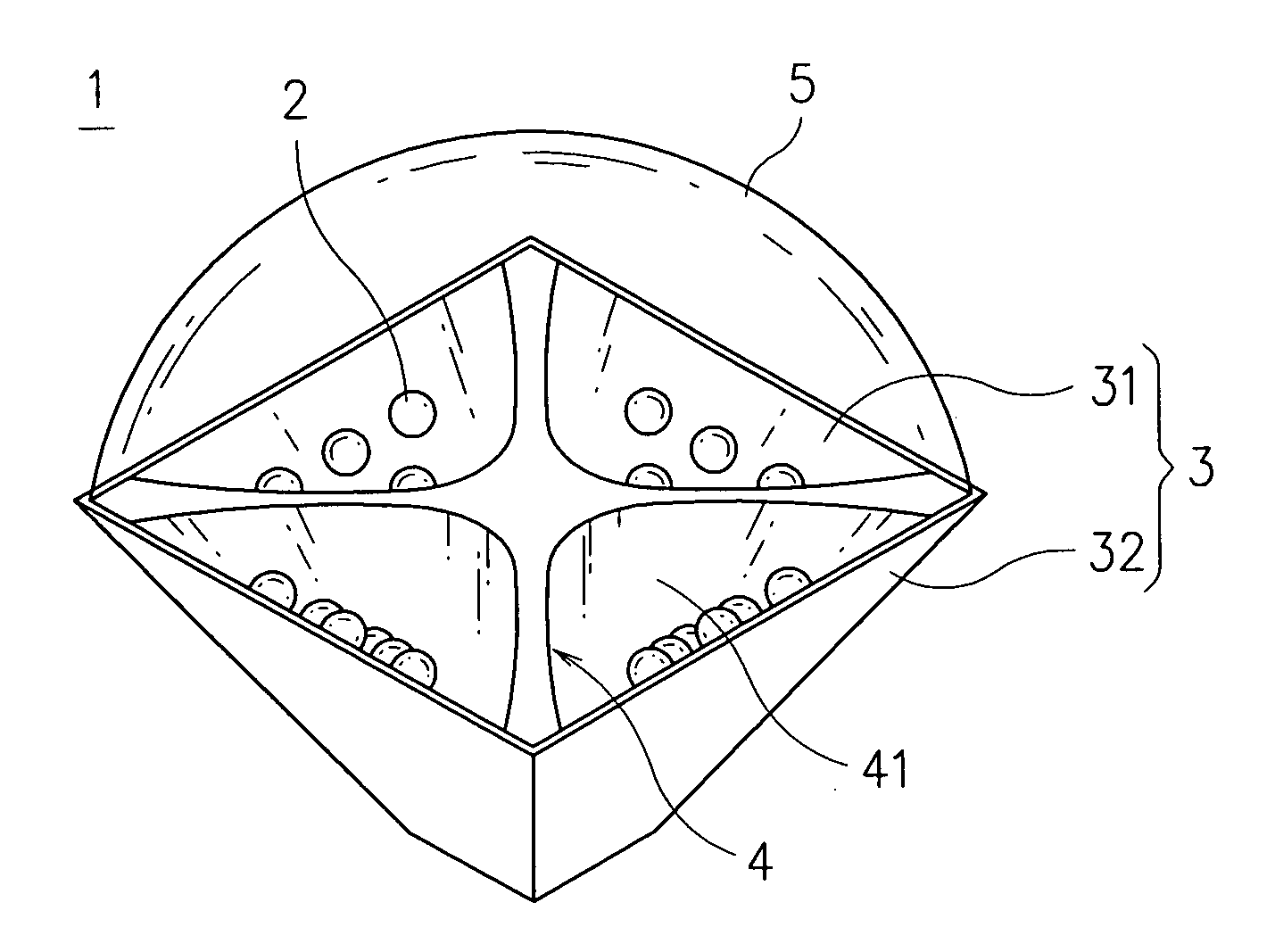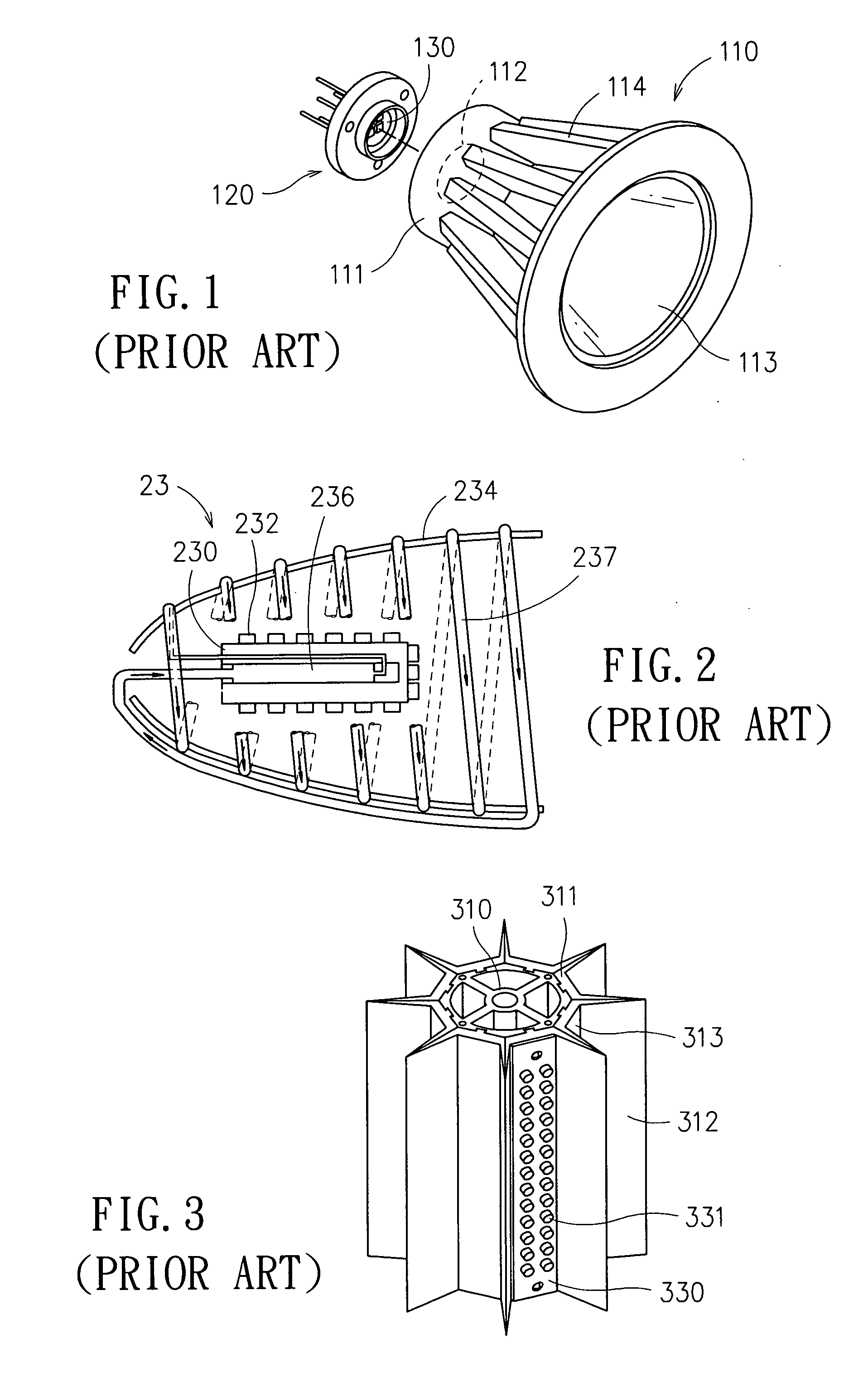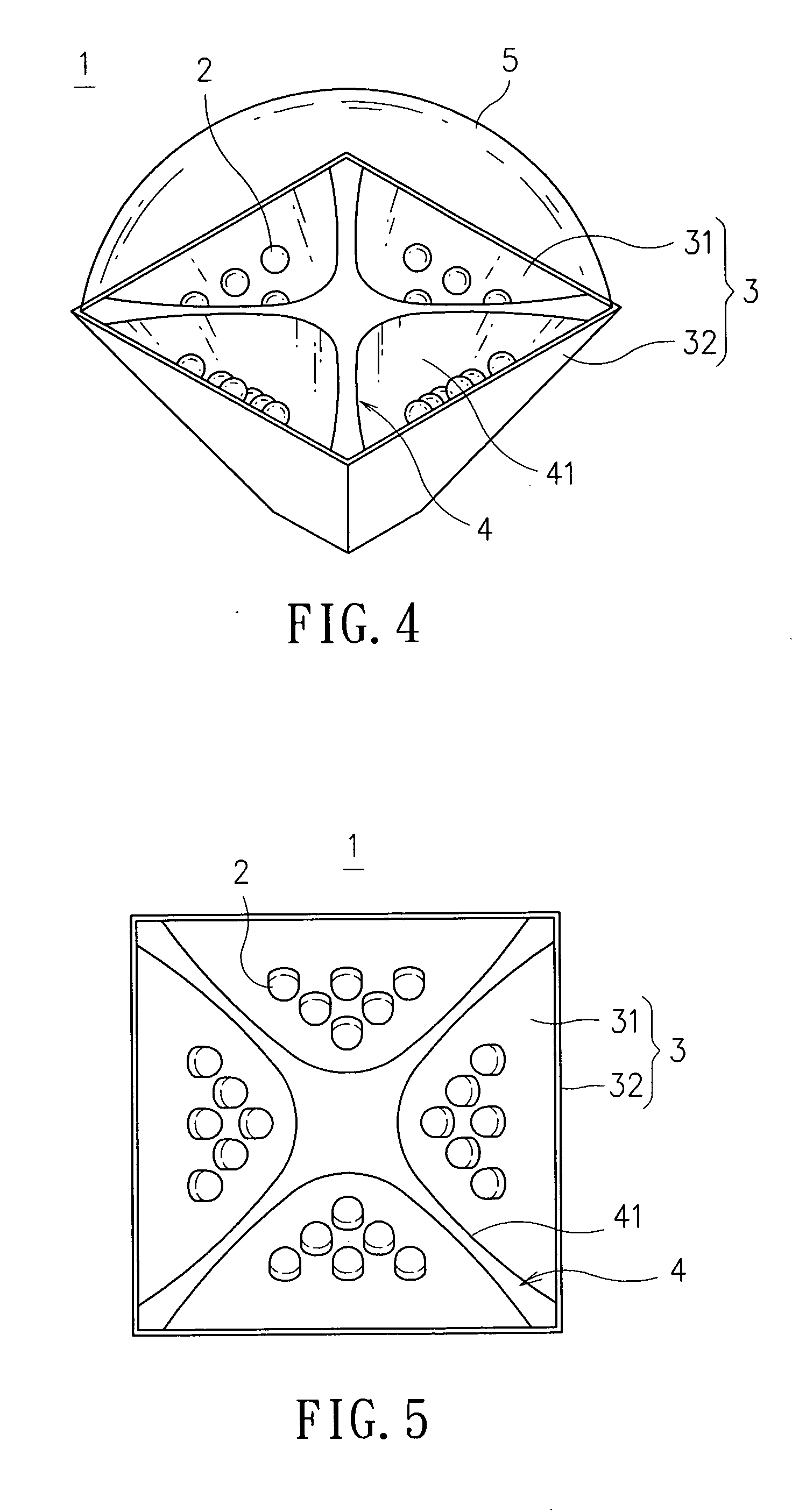Illumination module
a technology of illumination module and illumination module, which is applied in the field of illumination module, can solve the problems of insufficient luminous efficacy, high cost, and difficult heat dissipation, and achieve the effect of reducing the volume of the illumination module and high power illumination
- Summary
- Abstract
- Description
- Claims
- Application Information
AI Technical Summary
Benefits of technology
Problems solved by technology
Method used
Image
Examples
Embodiment Construction
[0026] For your esteemed members of reviewing committee to further understand and recognize the fulfilled functions and structural characteristics of the invention, several preferable embodiments cooperating with detailed description are presented as the follows.
[0027] Please refer to FIG. 4 oFIG. 6, which are schematic diagrams illustrating an LED illumination module according to a preferred embodiment of the present invention. The illumination module 1 is comprises of a plurality of light sources 2, a plurality of light source substrates 3, a plurality of reflecting members 4 and a lens 5. any one of the plural light source 2 can be a device selected from the group consisting of an LED, a solid-state light source, an incandescent bulb, and a gas discharge lamp. The arrangement and the number of the light sources 2 are dependent on the size of the illumination module 1 and the type of light source 2 being selected. In this preferred embodiment, LEDs are selected as the light sourc...
PUM
 Login to View More
Login to View More Abstract
Description
Claims
Application Information
 Login to View More
Login to View More - R&D
- Intellectual Property
- Life Sciences
- Materials
- Tech Scout
- Unparalleled Data Quality
- Higher Quality Content
- 60% Fewer Hallucinations
Browse by: Latest US Patents, China's latest patents, Technical Efficacy Thesaurus, Application Domain, Technology Topic, Popular Technical Reports.
© 2025 PatSnap. All rights reserved.Legal|Privacy policy|Modern Slavery Act Transparency Statement|Sitemap|About US| Contact US: help@patsnap.com



